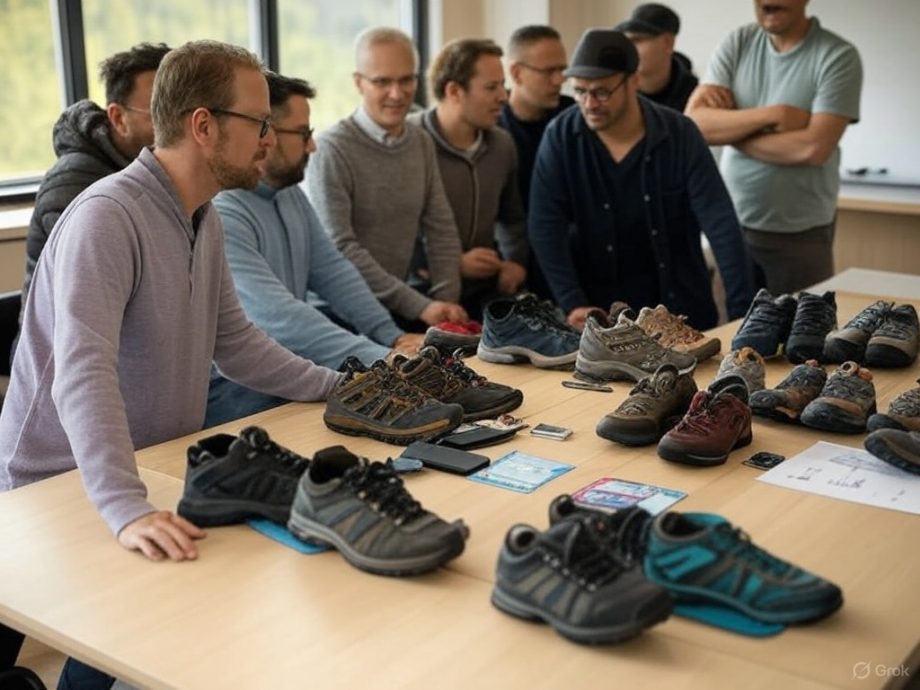
Hiking is a fantastic way to explore nature, stay active, and challenge yourself. However, a great hike starts with the right pair of hiking shoes. Choosing the wrong pair can lead to discomfort, blisters, or even injury. To ensure that your feet stay happy on the trail, it’s essential to select hiking shoes that offer both support and durability. Below, we’ll break down the key features you should look for when choosing hiking shoes.
1. Fit and Comfort
The most important feature of any hiking shoe is how it fits your foot. A proper fit ensures comfort and prevents blisters. When trying on hiking shoes, make sure to:
- Wear the socks you plan to hike in: Hiking socks are often thicker than regular socks, so it’s important to try on shoes with the right type of socks.
- Test for toe room: You should be able to wiggle your toes comfortably. Your toes shouldn’t feel cramped at the front of the shoe.
- Heel grip: Your heel should not slip out when walking. A snug fit in the heel area is crucial for preventing blisters and ensuring stability.
- Try them on later in the day: Feet tend to swell throughout the day, so trying on shoes in the afternoon or evening will give you a better idea of the fit.
2. Ankle Support
Hiking shoes generally come in three styles: low-cut (similar to sneakers), mid-cut (offering some ankle support), and high-cut (best for heavy backpacking or rugged terrain).
- Low-cut shoes: Best for well-maintained trails and day hikes. They’re lightweight and provide great mobility for fast-paced hikes.
- Mid-cut shoes: These offer a balance of support and weight. They’re ideal for day hikes with a light backpack or for those who want a bit more ankle stability.
- High-cut boots: Best for multi-day hikes with a heavy pack or for off-trail hiking on rugged terrain. They provide maximum ankle support and help prevent twists or injuries.
3. Sole and Traction
The outsole of your hiking shoe plays a major role in providing traction on different surfaces. Look for:
- Deep, multi-directional lugs: These provide excellent grip on uneven or slippery surfaces, such as rocks or mud.
- Rigid but flexible midsole: The midsole should offer some flexibility to allow your foot to move naturally but be rigid enough to provide stability on uneven ground.
- Shanks and plates: Many hiking shoes come with built-in shanks (for underfoot support) and plates (to protect against rock bruising). Steel or nylon shanks provide more rigidity, while plastic shanks are lighter but offer slightly less support.
4. Material and Durability
The material of your hiking shoes impacts both their durability and breathability. Common materials include:
- Full-grain leather: Durable and water-resistant, leather hiking shoes are great for rugged terrain and long-lasting wear. However, they tend to be heavier and may require a break-in period.
- Suede leather and synthetic fabrics: These materials offer a lighter weight option with quicker drying times. Shoes made from these materials often require less break-in time.
- Mesh and breathable fabrics: If you’re hiking in hot or humid environments, look for shoes with breathable mesh panels to keep your feet cool and dry.
5. Waterproofing
If you’re hiking in wet or unpredictable conditions, waterproofing is essential. Many hiking shoes feature:
- Gore-Tex or similar membranes: These provide a waterproof barrier while still allowing your feet to breathe. Shoes with Gore-Tex or similar technologies are ideal for hiking in wet climates or crossing streams.
- Sealed seams and gusseted tongues: To further enhance waterproofing, look for shoes with sealed seams and gusseted (attached) tongues, which prevent water from seeping in through the stitching or tongue area.
6. Weight
The weight of your hiking shoes can greatly impact your hiking experience. Lighter shoes are generally more comfortable for day hikes and fast-paced adventures, while heavier shoes provide more support and durability for longer, more challenging hikes.
- Lightweight shoes: Best for day hikes, easy trails, or those who prioritize speed.
- Heavier boots: Ideal for backpackers, multi-day hikes, or those who need maximum support and protection.
Conclusion
Choosing the right hiking shoes is crucial for a safe, comfortable, and enjoyable hiking experience. Focus on finding a pair that offers a proper fit, adequate support, durable materials, and good traction. Whether you’re tackling a day hike or a multi-day backpacking trip, investing in high-quality hiking shoes will ensure your feet are well-protected and ready for any adventure.
